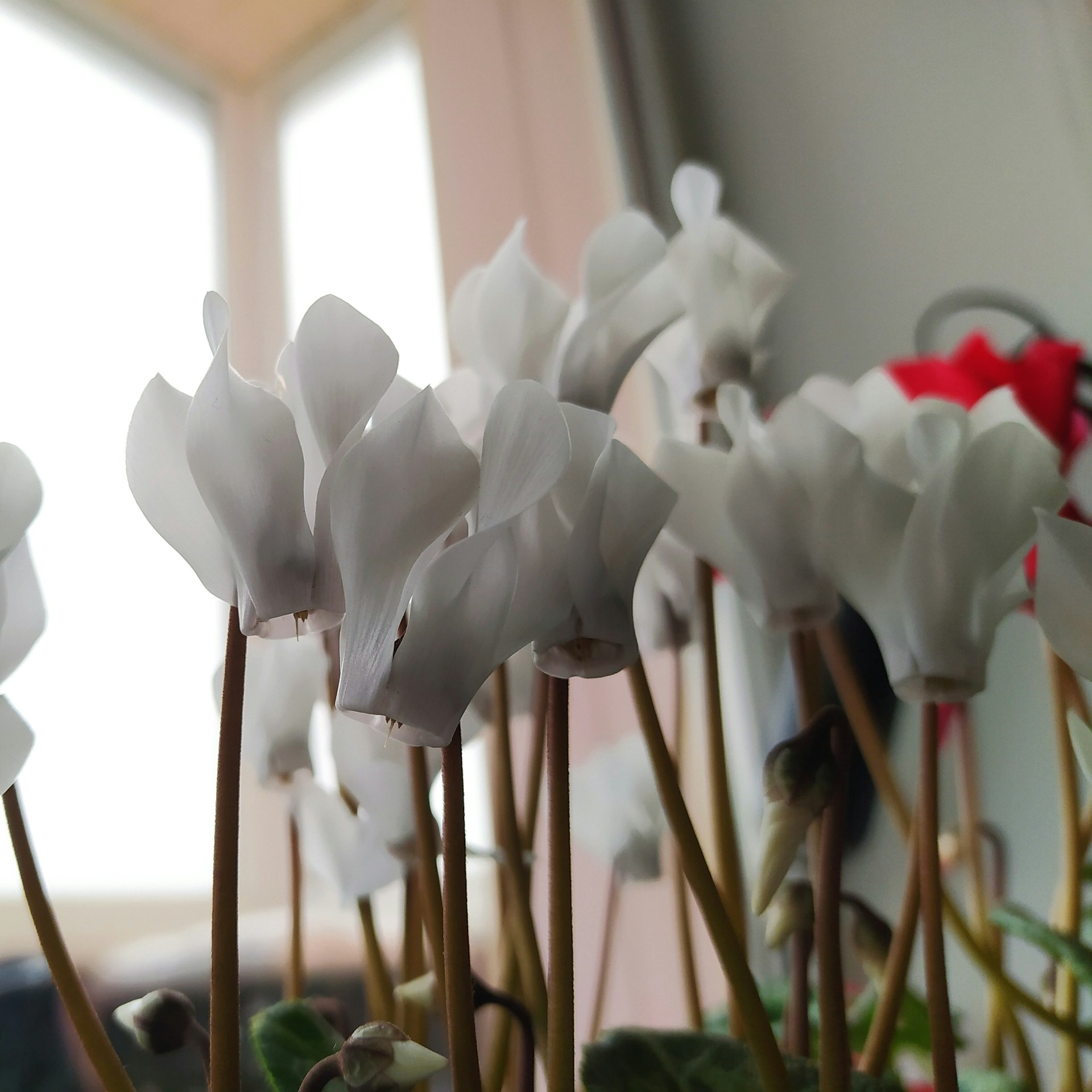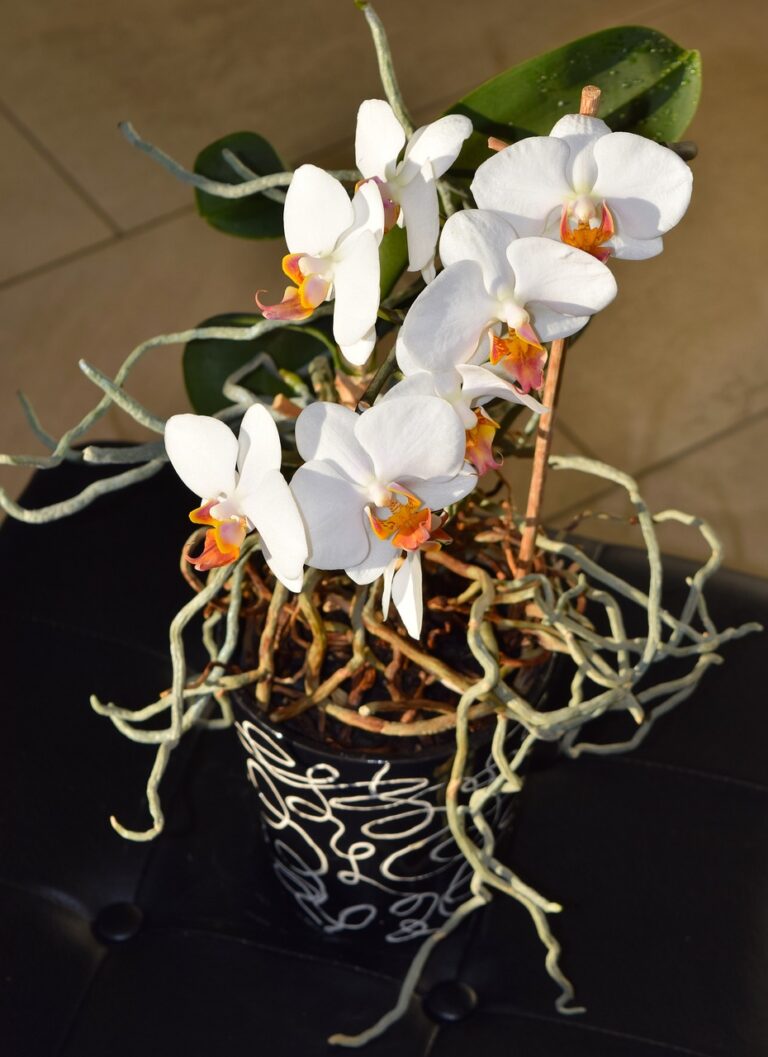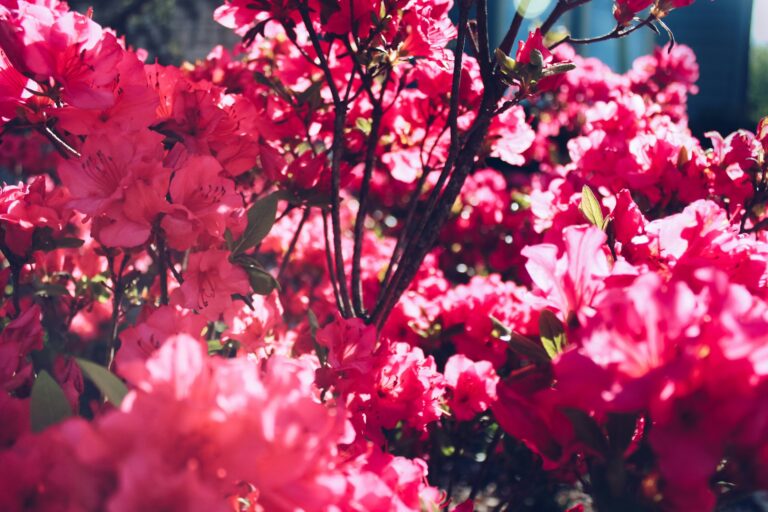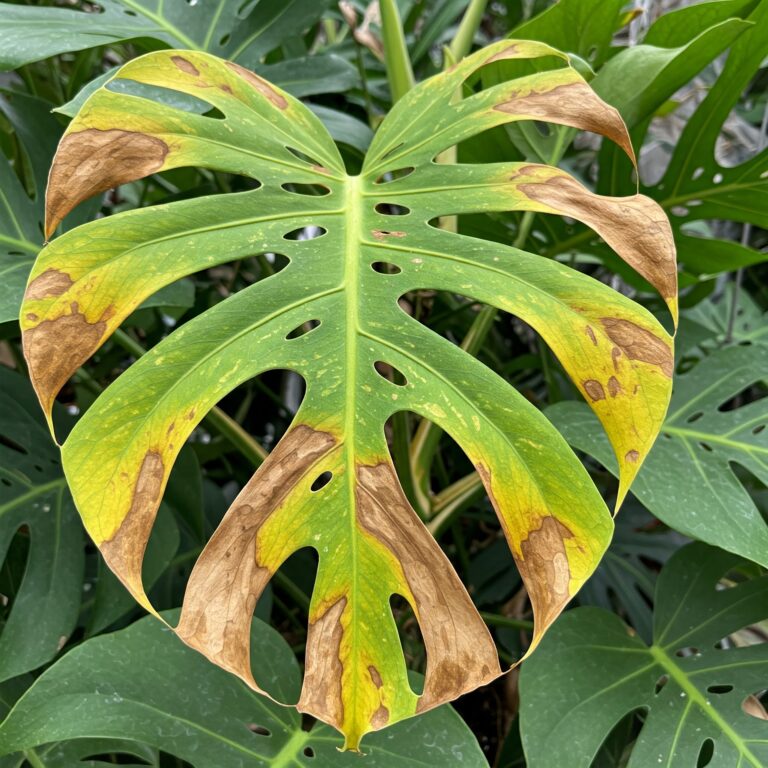Cyclamen plants, with their delicate, butterfly-like blooms and vibrant colors, are a delightful addition to any indoor garden. These charming houseplants, known for their winter blooms, bring a splash of color during the colder months when many other plants are dormant.
However, caring for cyclamen plants in pots can be a bit challenging, as they have specific needs that must be met to thrive.
Fear not, plant parents! I’m here to share my top secrets for keeping your potted cyclamen happy and healthy all year round. From optimal lighting to watering techniques, we’ll cover everything you need to know to enjoy those vibrant, butterfly-like flowers for seasons to come.
Cyclamen Watering in Pots
Watering is one of the most crucial aspects of cyclamen care, especially when these plants are confined to pots. Striking the right balance is key to maintaining their health and vibrant blooms.
Importance of Proper Watering for Potted Cyclamen
Cyclamen plants are known for their preference for slightly moist, well-drained soil. Over-watering can lead to root rot, while under-watering can cause the plant to wilt and fail to thrive. Understanding the specific needs of your potted cyclamen is essential to keeping them healthy.
Signs of Over and Under-Watering
Knowing the signs of over and under-watering can help you adjust your care routine. Over-watered cyclamen often display yellowing leaves and a soggy appearance, while under-watered plants will have drooping, dry leaves and a lack of vigor. Regularly check the soil moisture level by sticking your finger into the top inch of soil—if it feels dry, it’s time to water. You can also use a soil moisture meter to check if the soil is dry.
Ideal Watering Schedule and Methods
The best way to water your potted cyclamen is from the bottom up. Place the pot in a shallow dish of water and allow the plant to soak up moisture for about 15-20 minutes. This method helps prevent water from sitting on the leaves, which can lead to fungal issues.
During the growing season, water your cyclamen once a week or when the soil feels dry to the touch. Reduce watering during the dormant period, typically in the summer, when the plant requires less moisture.
Lighting Requirements for Potted Cyclamen
Providing the right amount of light can encourage blooming and ensure your plant remains healthy throughout its lifecycle.
Best Light Conditions for Blooming Cyclamen
Cyclamen plants thrive in bright, indirect light. An east or north-facing window is ideal, where they can receive morning sunlight and avoid the harsh afternoon sun.
Direct sunlight can scorch the leaves and cause the flowers to fade prematurely, so it’s important to find a spot where the light is filtered.
Adapting to Low Light Environments
If your home doesn’t have a naturally bright spot, don’t worry—cyclamen are adaptable and can tolerate lower light conditions. However, be aware that reduced light may result in slower growth and fewer blooms. In lower light, rotate the pot every few days to ensure even light distribution, preventing the plant from becoming lopsided.
Using Supplemental Lighting as Needed
For those in particularly dim environments, consider using supplemental grow lights to provide your indoor cyclamen with the light they need. LED grow lights are energy-efficient and can be adjusted to provide the perfect light spectrum for your plant. Position the light about 12 inches above the plant and keep it on for 12-14 hours a day to mimic natural daylight.
Temperature and Humidity for Potted Cyclamen
Cyclamen plants are native to cooler climates, so maintaining the right temperature and humidity levels is crucial for their well-being.
Ideal Temperature Range for Cyclamen
Cyclamen prefer cool temperatures, ideally between 50-65°F (10-18°C) during the day and slightly cooler at night. Avoid placing them near heat sources such as radiators or vents, as excessive warmth can cause the plant to go dormant prematurely. A cooler room will help extend the blooming period and keep your cyclamen looking its best.
Handling Temperature Fluctuations
Sudden changes in temperature can stress your cyclamen, leading to dropped buds or wilting leaves. Try to keep the plant in a stable environment away from drafts or sudden temperature shifts. If your home tends to have fluctuating temperatures, placing the plant in a more stable area, like a bathroom or kitchen, can help.
Maintaining Suitable Humidity Levels
Cyclamen enjoy moderate humidity, around 50-60%, which mimics their natural environment. If your home is particularly dry, especially in the winter months, you can increase humidity by placing the pot on a tray filled with water and pebbles. Just make sure the pot isn’t sitting directly in the water, as this could lead to root rot. Misting the plant lightly can also help maintain the necessary humidity levels.
Soil and Potting for Cyclamen in Containers
The right soil and potting technique are vital for ensuring your potted cyclamen remains healthy and vibrant.
Choosing the Right Potting Mix
Cyclamen thrive in a well-draining, slightly acidic soil mix. A good-quality potting mix for flowering plants, supplemented with perlite or sand, will ensure proper drainage. Avoid using heavy, clay-based soils, which can retain too much moisture and lead to root rot.
Ensuring Proper Drainage
Proper drainage is essential to prevent water from accumulating at the bottom of the pot, which can cause the roots to rot. Always use pots with drainage holes and consider placing a layer of gravel or small stones at the bottom before adding soil. This extra layer helps ensure that water can drain freely, keeping your cyclamen’s roots healthy.
Repotting Schedule and Techniques
Cyclamen plants benefit from being repotted every 2-3 years, ideally in the fall before they start their blooming cycle. When repotting, choose a pot that is only slightly larger than the current one to prevent the soil from staying too wet. Gently remove the plant from its pot, shake off excess soil, and replant it in fresh potting mix. Water lightly after repotting and place the plant in a cool, bright location to help it adjust.
Fertilizing Potted Cyclamen
Fertilizing is a crucial aspect of cyclamen care, as it provides the nutrients necessary for healthy growth and vibrant blooms.
Nutrient Needs of Cyclamen Plants
Cyclamen plants have moderate nutrient needs. A balanced, water-soluble fertilizer with an equal ratio of nitrogen, phosphorus, and potassium (such as 10-10-10) is ideal for promoting healthy foliage and abundant blooms. Fertilizing regularly during the growing season will keep your cyclamen thriving.
Types of Fertilizers and Application Methods
Choose a fertilizer formulated for flowering houseplants and dilute it to half strength. Apply the fertilizer every 2-4 weeks during the active growing and blooming period, typically from fall to spring. Avoid getting the fertilizer on the leaves or flowers, as this can cause burns; instead, apply it directly to the soil after watering.
Avoiding Over-Fertilization
Over-fertilization can lead to excessive foliage growth at the expense of blooms, and in some cases, can cause leaf burn. To avoid this, flush the soil with water every few months to remove any accumulated salts from the fertilizer. During the dormant period, reduce or stop fertilizing altogether, as the plant’s nutrient needs decrease during this time.
Dormancy and Reblooming for Potted Cyclamen
Understanding the natural dormancy cycle of cyclamen is key to ensuring they rebloom year after year.
Understanding Cyclamen’s Natural Dormancy Cycle
Cyclamen plants naturally enter a dormant period in the summer after their blooming season. During this time, the leaves will turn yellow and die back, which is perfectly normal. It’s essential to reduce watering during this period and allow the plant to rest in a cool, shaded spot.
Techniques for Encouraging Reblooming
After the dormancy period, usually in late summer or early fall, your cyclamen will start to show new growth. Gradually increase watering and move the plant back to a bright, cool location. Resume regular care, and with a bit of patience, your cyclamen will reward you with a fresh flush of blooms.
Transitioning Cyclamen Through Dormancy
To successfully transition your cyclamen through dormancy, keep the plant in a cool, dry location with minimal watering. Once new growth appears, repot the plant if needed, refresh the soil, and return to a regular care routine. This cycle of dormancy and active growth is what allows cyclamen to rebloom each year.
How To Aerate The Soil In A Potted Plant
Ultimate Guide: How to Care for Calathea
Troubleshooting Common Potted Cyclamen Issues
Even with the best care, potted cyclamen can encounter some challenges. Here’s how to address common issues that might arise.
Identifying and Treating Pests
Common pests that affect cyclamen include aphids, spider mites, and cyclamen mites. These pests can cause damage to the leaves and flowers, leading to unsightly spots or distorted growth. Regularly inspect your plant for signs of infestation and treat it with insecticidal soap or neem oil if necessary.
Addressing Common Diseases
Cyclamen are susceptible to diseases such as botrytis (gray mold) and root rot, particularly in humid or poorly ventilated environments. To prevent these issues, ensure proper air circulation around the plant and avoid over-watering. If you notice any signs of disease, such as mold on the leaves or a foul smell from the soil, take immediate action by removing affected parts and improving the plant’s growing conditions.
Resolving Growth and Blooming Problems
If your cyclamen isn’t blooming or its growth seems stunted, it may be due to improper care conditions. Check that the plant is receiving enough light, water, and nutrients, and adjust your care routine as needed. Ensuring that the plant experiences cooler temperatures can also help encourage blooming.
Conclusion
There you have it, plant enthusiasts—your ultimate guide to caring for cyclamen in pots! With these seven expert tips, you’ll be well on your way to keeping your houseplant blooms vibrant and long-lasting. Remember, cyclamen are a bit finicky, but with the right care, they’ll reward you with those stunning, otherworldly flowers. Embrace their unique needs and enjoy the journey of nurturing these delicate beauties. Who knows, you might just become the envy of all your plant-loving friends! So go forth and conquer those cyclamen care challenges—your home is about to get a whole lot more Mediterranean-chic.



